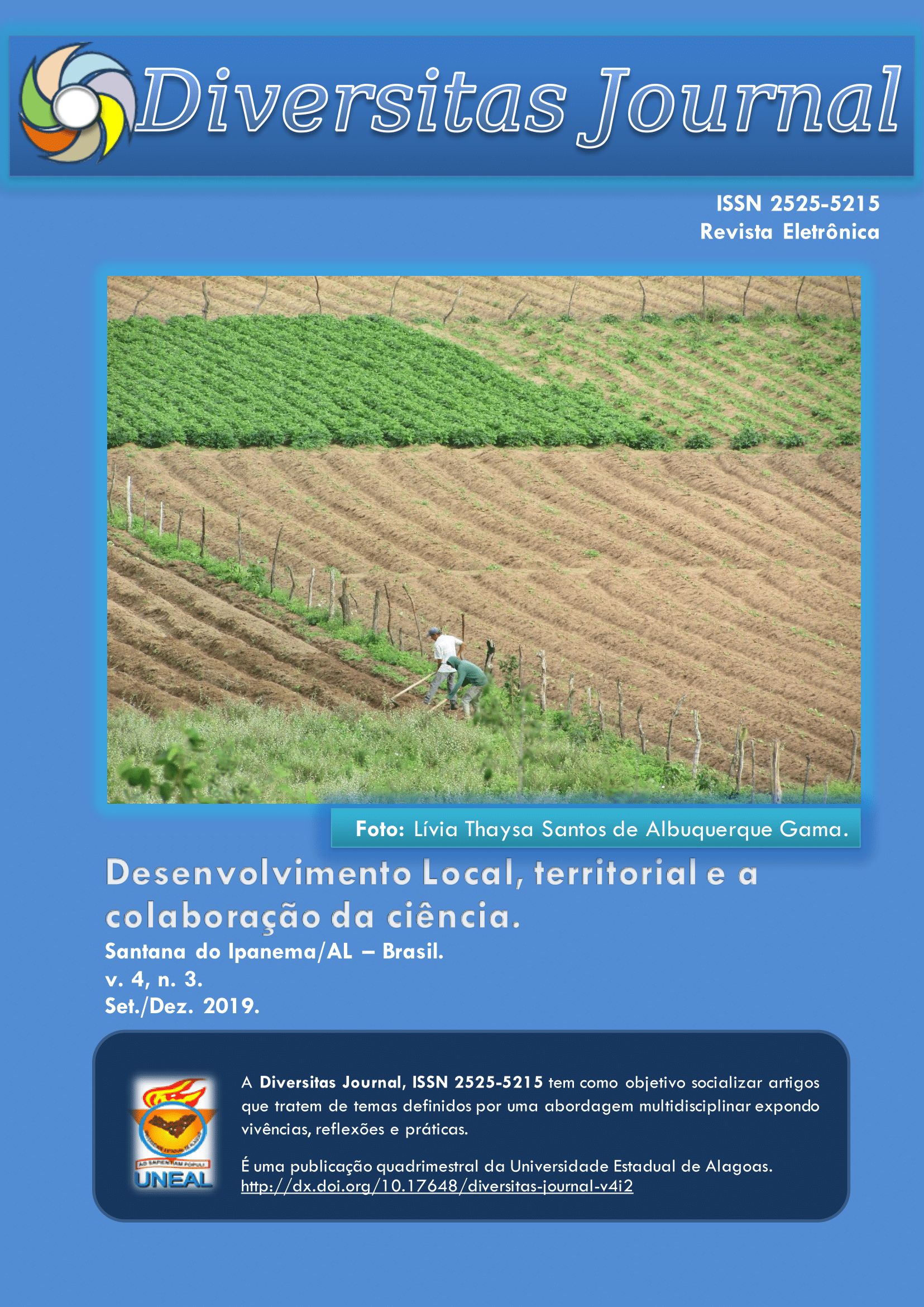Alteração da atividade locomotora de populações de traça-das-crucíferas Plutella xylostella L. 1758 (Lepidoptera: Plutellidae) sobre área tratada com o inseticida metilcarbamato de oxina
DOI:
https://doi.org/10.17648/diversitas-journal-v4i3.840Abstract
Herbivorous insects have developed a series of behavioral responses to insecticides used in agricultural systems. The aim of the present study was to investigate behavioral changes in populations of diamondback moths exposed to areas treated with the oxine methylcarbamate insecticide. Populations of Plutella xylostella from the municipalities of Camocim de São Félix-PE (CSF), Sairé-PE (SR), Lajedo-PE (LJ) and laboratory populations: Recife-PE (RCF) and Viçosa-MG (VÇS) were exposed to dry residues of the insecticide in increasing doses. These populations had the behavioral parameters analyzed (Walking Distance (DC), Walking Time (DC), Average Speed (VM), Number of Stops (NP) and Rest Time (TR)). Regarding CD, the populations of SR, CSF, LJ and VÇS did not show a clear pattern of reduction or increase of CD. The FHR population did not show any change in CD and differed statistically between studied areas. Regarding the TC parameter, the SR population showed an increase in this parameter, the FHR decreased and the other populations did not show a defined pattern. For Parameter VM, there was a reduction in the SR and CSF populations, and an increase in the MV in the FHR population. For the TR variable, the LJ, VSÇ and CSF populations did not present a definite pattern, therefore, the RCF population increased and SR reduced this parameter. Changes resulting from insect behavioral responses to insecticide-treated areas contribute to the poorer control effectiveness of insecticides as they are less exposed to lethal concentrations.
Metrics
Downloads
Published
How to Cite
Issue
Section
License
Copyright (c) 2019 José Gomes da Silva Filho, Iuri Andrade de Melo, Thiago Izaquiel de Farias, Lucas Felipe Prohmann Tschoeke, Cícero Luiz Franco Franco Junior, César Auguste Badji

This work is licensed under a Creative Commons Attribution 4.0 International License.
The Diversitas Journal expresses that the articles are the sole responsibility of the Authors, who are familiar with Brazilian and international legislation.
Articles are peer-reviewed and care should be taken to warn of the possible incidence of plagiarism. However, plagiarism is an indisputable action by the authors.
The violation of copyright is a crime, provided for in article 184 of the Brazilian Penal Code: “Art. 184 Violating copyright and related rights: Penalty - detention, from 3 (three) months to 1 (one) year, or fine. § 1 If the violation consists of total or partial reproduction, for the purpose of direct or indirect profit, by any means or process, of intellectual work, interpretation, performance or phonogram, without the express authorization of the author, the performer, the producer , as the case may be, or whoever represents them: Penalty - imprisonment, from 2 (two) to 4 (four) years, and a fine. ”















.png)




